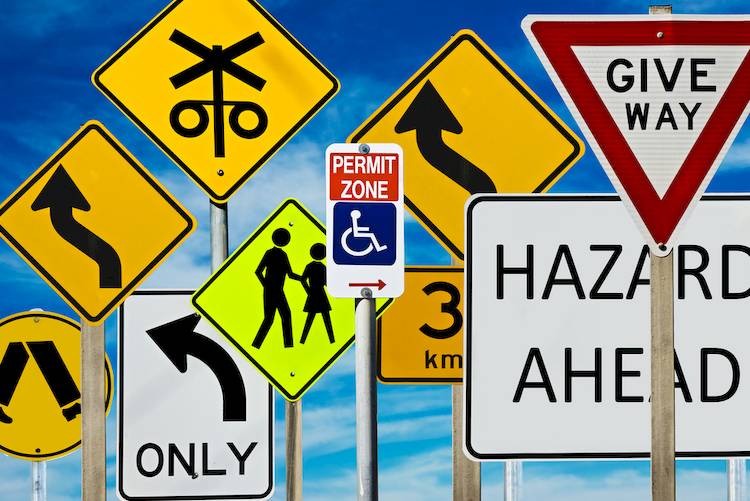

With all of the mountains and beautiful countryside views, there’s a lot to see and do in West Virginia. Of course, to do everything in the state, you’ll need to do some driving, which means you’ll want to be familiar with some of the most important rules of the road in West Virginia.
General safety rules in West Virginia
Federally approved seat-belts must be worn by all drivers and passengers in moving vehicles in West Virginia. The driver is responsible for ensuring that all passengers are wearing seat-belts, but the driver will not be held responsible for passengers over 18 years of age in the back seat.
All children under the age of eight and/or who are less than 4’9” tall must ride in the back seat and be secured in an appropriate child seat or booster seat. Infants and toddlers should ride in approved child passenger restraint systems.
Motorists should always yield to pedestrians in crosswalks and at unmarked intersections. Also, you should always stop at the stop line, so that you do not block the crosswalk at an intersection.
Bicyclists should follow the same rules as motorists, riding with the flow of traffic. Motorists may not enter, drive in, or park in bicycle lanes, and should always give plenty of room and make sure it is safe to pass before moving around a bicyclist.
In West Virginia, traffic coming from all directions must stop for school buses when they have their flashing red lights on. The only exception to this is when you are traveling on the opposite side of an interstate highway.
Authorized emergency vehicles are allowed to exceed speed limits and proceed through intersections without stopping, even on a red light. You must always yield to emergency vehicles approaching from any direction.
Motorcyclists in West Virginia who are 16 years or older may apply for an instructional permit. After getting your permit, you must pass a 25-question exam with at least an 80% to get your motorcycle endorsement for your license.
Safe driving practices in West Virginia
Passing is only legal when you see a dashed yellow or white line between lanes. If there is a “No Passing Zone” sign, you may not pass, and you may not pass over a solid line.
Yellow flashing traffic lights tells you to slow down and make sure that the way is clear before you proceed. Red flashing traffic lights tells you to come to a complete stop and yield to traffic, pedestrians, and/or bicyclists before continuing.
When you reach a four-way stop, you should stop and yield to all vehicles that arrived at the stop before you. Drivers arriving at the same time should yield to the driver on the right.
Out of order traffic lights should be treated as four-way stops.
You can make a right on red in West Virginia if you first come to a complete stop and check to make sure that it’s safe to continue. If making a right on red is prohibited, you will see a sign indicating “No Turns on Red” or “No Right on Red.”
U-turns are allowed on many roads and highways but never on interstates. Do not make a U-turn at an intersection with a “No U-Turns” sign or where you cannot see at least 500 feet in each direction.
Blocking intersections is never legal in West Virginia. Do not attempt to enter an intersection or make a turn unless you can complete the turn and/or get all the way out of the intersection.
You may see ramp-metering signals at some on-ramps to freeways in West Virginia. These signals allow one car to enter the freeway at a time to assist with the flow of traffic.
Accidents and other legal issues for West Virginia drivers
Drivers involved in accidents in West Virginia should move their vehicles out of the roadway if possible. Then they should stop at the site of the accident or nearby, exchange information, and wait for law enforcement and/or EMT assistance to arrive.
Radar detectors are legal for use in passenger vehicles in West Virginia, but not for commercial vehicles.
West Virginia has an implied consent law, which means that by driving in the state you agree to a chemical test if charged with driving under the influence (DUI). If you do not submit to this test, you will have your license automatically suspended for a minimum of one year. While the legal limit for blood alcohol content (BAC) is 0.08 in most states, in West Virginia, having a BAC of 0.05-0.08 is legal evidence of impairment and may result in a DUI charge.
Vehicles registered in West Virginia must show valid rear license plates at all times.



